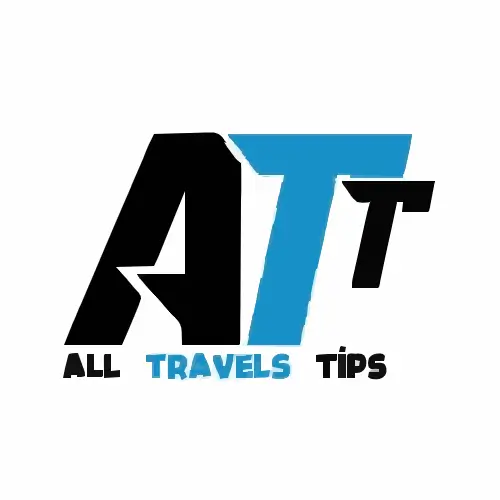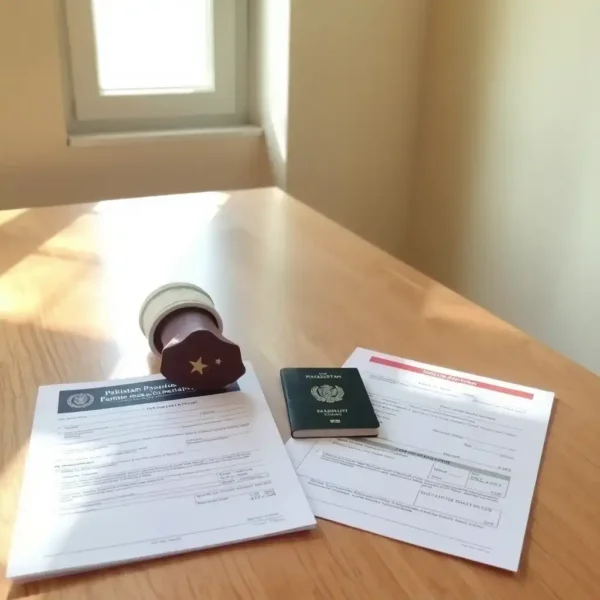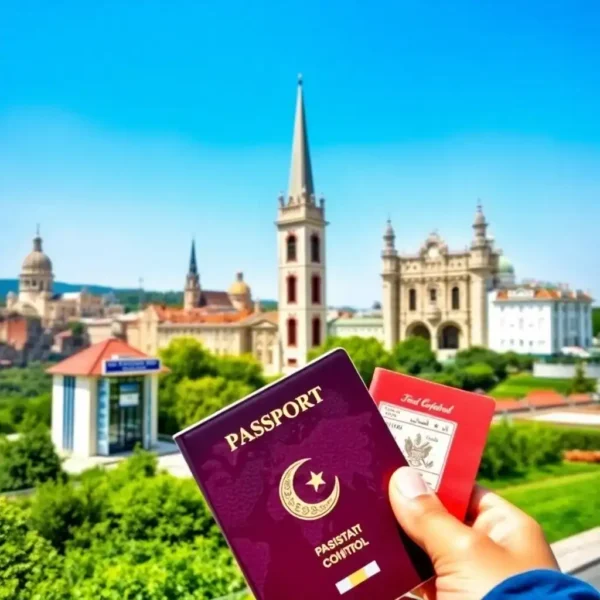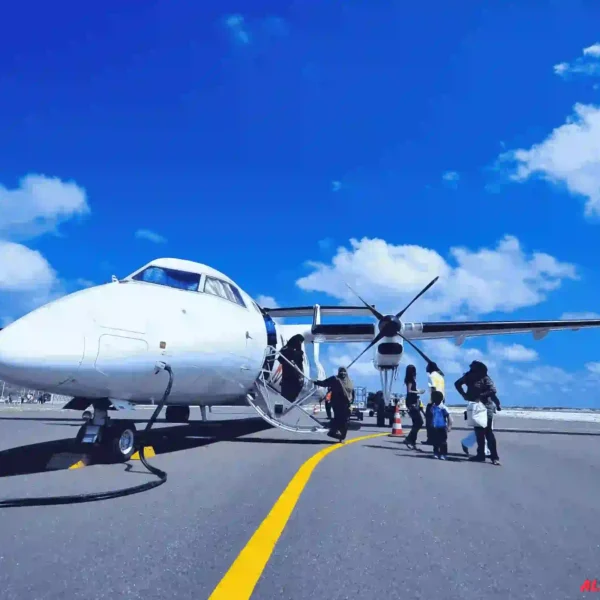Navigating the international visa application process can feel overwhelming. This easy-to-follow international visa application guide will help you navigate the process for tourism, business, study, work, and family visits. Whether you’re planning for any purpose, this step-by-step guide will ensure you have all the necessary visa documentation to get started.
Decide your goal of travel, research your destination’s visa requirements, gather essential travel documents (passport, photos, financial proof), complete the application form, pay the fee, and attend the visa interview if needed. Start your visa application process early to avoid delays! Now, let’s break it down for clear understandings.
What’s the purpose of your travel?
How to determine the right visa for travel purposes? Deciding your travel purpose is the first step to applying for the right visa. Are you visiting for tourism, attending a business meeting, enrolling in a study program, joining a family reunion, or starting a new job abroad? Each of these purposes requires a specific type of visa with unique requirements. Which visa type should you choose? Let’s explore how to choose the right visa for your travel goals and international visa application process.
Step 1: Determine Visa Types for Each Purpose
Choosing the right visa type is an essential part of the visa application process and ensures you meet the country-specific visa requirements. So, understanding your purpose is crucial for selecting the right visa type. Each purpose—whether it’s tourism, business, study, work, or family visits—has specific visa requirements. These are the visa types for travel purposes that most of the countries offer for travelers.
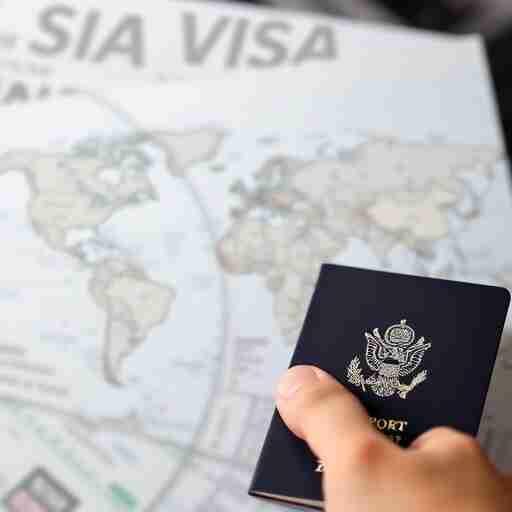
- Tourism: Most countries offer a tourist visa for leisure travel and short-term stays.
- Business: A business visa is needed for attending meetings, conferences, or professional engagements.
- Study: A student visa is required if you’re enrolling in an educational institution for long-term studies.
- Work: A work visa is mandatory for employment in a foreign country, typically sponsored by an employer.
- Family Visit: Often, a visitor visa or family reunion visa is needed to visit family members.
Question: Are all these purposes tied to the same country, or do you have different destinations for each?
Firstly, a general guide for different destinations for each purpose of travel—tourism, business, study, work, and family visits:
Tourism Visa Application Guide
Most countries offer tourist visas for leisure and sightseeing. A tourist visa is one of the easiest visa types to apply for, with simple visa application steps tailored for leisure travelers. It is also consider short-term travel visa allows leisure travelers to explore specific country’s destination for short periods of tourism. Tourist visa application process required some necessary documents that are:
- Travel documents for tourists needed:
- Valid passport (6+ months validity).
- Completed visa application form.
- Passport-sized photos.
- Proof of travel (flight tickets, hotel bookings, travel itinerary).
- Proof of financial means (bank statements).
- Travel insurance (required for many countries).
- What is the easiest tourist visa to apply for? Popular options include:
- Europe (Schengen Visa): Covers multiple countries in the Schengen Zone almost 26 countries.
- USA: B2 visa for tourism.
- Thailand: Easy eVisa options for tourists.
Learn how to prepare your tourist visa application and avoid common pitfalls.
Business Visa Application Guide
Business visas are for attending meetings, conferences, or professional events.
- Documents Needed:
- Valid passport.
- Visa application form and fee receipt.
- Invitation letter from the host company or organization.
- Proof of employment (employment contract or company letter).
- Business itinerary (meeting schedules, event details).
- Financial proof for travel expenses.
- Examples:
- USA (B1 Visa): For business activities.
- UK (Standard Visitor Visa): Covers short-term business visits.
- UAE: Specific business visa for meetings and trade fairs.
Study Visa Application Guide
Student visas are essential for pursuing education abroad. For students, understanding visa application steps and travel visa tips ensures a smooth visa process. Here are the common study visa requirements.
- Documents Needed:
- Valid passport.
- Admission letter from the educational institution.
- Proof of tuition payment.
- Proof of financial support (bank statements or scholarship documents).
- Academic transcripts and certificates.
- Student visa application form.
- Health insurance and medical certificates (if required).
- Visa interview (in some cases).
- Examples:
- USA (F1 Visa): For academic programs.
- Canada (Study Permit): Required for full-time courses.
- Australia (Student Visa Subclass 500): For international students.
For more clarifications and smoothness of the study visa application process check out these study visa tips.
Work Visa Application Guide
Combining visa purposes, such as transitioning from a work visa to a family visit visa, may be an option in some countries. Work visas are issued to those with employment offers abroad.
- Documents Needed:
- Valid passport.
- Job offer letter or employment contract from a foreign employer.
- Work visa application form.
- Proof of qualifications and work experience (certificates, CV).
- Financial proof (if self-sponsoring).
- Employer sponsorship documents (if applicable).
- Medical clearance and police clearance certificates (required by some countries).
- Examples:
- USA (H1B Visa): For specialized workers.
- Canada (Work Permit): For temporary foreign workers.
- Germany (Job Seeker Visa): Allows skilled workers to search for jobs.
To go deeper and more in-depth work visa application process for smoothness, check work visa application guide and tips.
Family Visit Visa Application Guide
Visitor visas allow you to visit family members residing abroad.
- Documents Needed:
- Valid passport.
- Invitation letter from the family member.
- Proof of relationship (birth/marriage certificates, etc.).
- Proof of the host’s legal residency in the destination country (residence permit, passport).
- Financial proof (yours or the host’s).
- Travel insurance.
- Examples:
- Schengen Visa: For visiting family in European countries.
- UK (Standard Visitor Visa): For short-term family visits.
- USA (B2 Visa): For visiting relatives.
Additional international visa application Guide Tips
- Plan Early: Visa processing times vary; start at least 1-3 months before your travel date.
- Multiple Entries: If you need to visit multiple countries, look into multi-entry visa options.
- E-Visas: Many countries now offer online visa applications for faster processing.
- Stay Updated: Check each country’s official embassy website for the latest requirements and COVID-19 protocols.
Secondly, If you are interested to know about all purposes to go in the same country, some countries that are popular and accommodating for a mix of tourism, business, study, work, and family visits. Here are a few top options to consider:
Popular Countries for Multi-Purpose Travel
United States
- Why? The U.S. offers a variety of visa types for multiple purposes: B1/B2 for tourism and business, F1 for study, H1-B for work, and visitor visas for family visits.
- Ideal For: Diverse cultural experiences, higher education opportunities, and strong job prospects.
Canada
- Why? Known for being welcoming to immigrants, Canada provides options like the Visitor Visa, Study Permit, Work Permit, and Super Visa for family reunions.
- Ideal For: Natural beauty, high-quality education, and a growing job market.
United Kingdom
- Why? The UK has tailored visa options for tourists, students, professionals, and family visits. It’s also a hub for business and cultural exploration.
- Ideal For: Rich history, prestigious universities, and international job opportunities.
Australia
- Why? Australia is known for its flexible visa options, including tourist visas, student visas, skilled worker visas, and family visas.
- Ideal For: Stunning landscapes, world-class education, and a laid-back lifestyle.
Germany (or Schengen Area)
- Why? Germany offers robust visa programs for study (Student Visa), work (Employment Visa), and family reunions. Plus, a Schengen Visa allows travel across multiple European countries.
- Ideal For: High-quality education, engineering and tech jobs, and European travel.
New Zealand
- Why? New Zealand is popular for its welcoming policies for tourists, students, and skilled workers.
- Ideal For: Adventure tourism, peaceful living, and education.
Decision Factors to Consider:
- Education Opportunities: Which country has programs suited to your study goals?
- Job Market: Are there industries aligned with your career path?
- Ease of Visa Process: Which country has a smoother process for combining your purposes?
- Cost of Living: Consider affordability for long-term stays.
- Language: Are you comfortable with the country’s primary language?
If you are interested in specific any of these countries, you can explore a countries specific visa application guide for that destination!
Step 2: Combine or Apply Separately
- Some countries may allow dual-purpose visas (e.g., tourism and business combined), but others require separate applications.
- If you’re planning to combine purposes for a single trip, we can look into countries with multi-purpose visa options.
Question: Are you planning a single trip combining multiple purposes, or separate trips for each reason?
Let’s look at both scenarios:
Single Trip Combining Multiple Purposes
When planning a single trip with multiple purposes—tourism, business, study, work, and family visits—you’ll need to carefully review the visa options for the destination country. Some countries allow a multi-purpose visa or multi-entry visa that combines various purposes.
Here’s what you need to do:
Step-by-Step Guide for a Single Trip with Multiple Purposes:
- Check Multi-Purpose or Combined Visa Options:
Some countries allow you to combine different purposes (tourism + business, family visit + study, etc.) into one visa. For example:- USA (B1/B2 Visa): This visa allows you to travel for both tourism and business purposes.
- UK (Standard Visitor Visa): Can be used for tourism, business, and short-term study.
- Schengen Visa: Allows travel across 26 European countries for tourism, family visits, or business purposes.
- UAE (Visit Visa): It can cover tourism, business, and family visits depending on the conditions.
- Visa Application Process:
Complete the visa application form with details of all the purposes of your trip.
Attach relevant supporting documents for each purpose. For example:- Tourism: Flight tickets, hotel bookings, itinerary.
- Business: Invitation letter from a company, conference registration.
- Family Visit: Invitation letter from family, proof of relationship.
- Clarify Your Intentions in the Application:
Be clear in your application about the multiple purposes of your trip to avoid confusion. You might need to provide additional explanation or documents. - Check Duration and Validity:
Ensure the visa allows for the duration of your trip and covers all the purposes you plan to pursue. Some visas are valid for only a specific period, so you may need to request an extension or look into multiple-entry visas.
Separate Trips for Each Purpose
If you’re taking separate trips for each purpose (tourism, business, study, work, family visits), you’ll need to apply for different visas for each journey.
Step-by-Step Guide for Separate Trips:
- Tourism Visa:
Apply for a tourist visa if your main purpose is leisure travel.- Required documents: Passport, photos, itinerary, financial proof, and travel insurance.
- Business Visa:
If you are attending a business conference, meeting, or professional engagement in a different country, apply for a business visa.- Required documents: Invitation letter, business itinerary, company documents, and financial proof.
- Study Visa:
If your main reason is studying abroad, apply for a student visa.- Required documents: Admission letter, proof of tuition payment, and financial support documents.
- Work Visa:
If you are going for employment in another country, you will need to apply for a work visa, typically sponsored by an employer.- Required documents: Job offer letter, proof of qualifications, and sometimes a medical exam or police clearance.
- Family Visit Visa:
If you’re visiting family members in another country, you’ll need a family visit visa.- Required documents: Invitation letter from the family member, proof of relationship, and financial support.
Considerations for Separate Trips:
- Timeline: Make sure your travel dates align with visa processing times, as you’ll need to account for each visa’s approval timeline.
- Cost: Each visa will require its own application fee and supporting documents.
- Multiple Applications: You’ll have to submit separate applications for each purpose, so this will involve more paperwork and time.
Which Option is Best for You?
For travelers looking to combine visa purposes, understanding visa types for travel purposes is crucial to streamline the process.
- Single Trip (Combining Purposes): This is ideal if you plan to handle multiple activities (e.g., tourism and business meetings) during a single trip to a country and can find a visa that allows for this combination.
- Separate Trips: This option is more suitable if each purpose requires a completely different focus (e.g., studying in one country, then working in another).
comparison of benefits: Single Trip (Combining Purposes) VS Separate Trips (Each Purpose)
- Example Table:
| Single Trip (Combining Purposes) | Separate Trips (Each Purpose) |
|---|---|
| Cost-effective | Tailored visa for specific goals |
| Less paperwork | Greater flexibility |
| Ideal for short trips | Better for long-term stays |
Step 3: Prepare General and Essential Documentation
Here’s a visa application documents checklist of most common visa documents required across almost all visa types. Ensure you have the following commonly required travel documents including visa documentation requirements, making the visa application process more efficient.
- Valid Passport: With at least 6 months’ validity from your travel date.
- Visa Application Form: Completed and signed as per the requirements of the respective visa.
- Photographs: Passport-sized photos following the destination country’s guidelines and requirements.
- Proof of Travel Purpose: Examples include:
- Tourism: Flight tickets, hotel bookings, travel itinerary.
- Business: Invitation letter from the host company, meeting details.
- Study: Admission letter, proof of tuition payment.
- Work: Job offer letter, work contract.
- Family Visit: Invitation letter from a family member, proof of relationship.
- Financial Proof: Bank statements or financial affidavits to show you can support yourself during your stay.
- Travel Insurance: Required by many countries for medical and emergency coverage.
- Additional Documents: Depending on the visa type, such as police clearance, medical exams, or proof of ties to your home country.
Why keeping copies of your documents helps? Here are some additional time-saving Essential Travel Visa Tips for International Trips that will help you to make your travel more smooth.
Step 4: Research Country-Specific Visa Requirements
Understanding country-specific visa requirements is essential for avoiding delays in the international visa application process. Each country has unique visa application processes. For Example:
- Some countries offer e-visas (applied online), while others require an in-person application.
- Schengen countries (Europe) often require proof of travel within the Schengen Area for a tourist visa.
For instance, a Canada visitor visa often requires biometrics and proof of ties to your home country, while a Schengen Visa focuses on travel insurance and itinerary details.
Question: What are the popular countries’ visa requirements?
If you’re considering a mix of tourism, business, study, work, and family visits, let’s take a closer look at the visa options for some popular countries that accommodate multiple purposes:
United States
Visa Types & Visa requirements:
- B1/B2 Visa (Tourism + Business): This combined visa is for people traveling for both business and leisure purposes.
- F1 Visa (Study): For students who wish to pursue full-time studies in the U.S.
- H1B Visa (Work): For skilled workers sponsored by a U.S. employer.
- B2 Visa (Family Visit): For visiting family members in the U.S.
What is the visa process for United States?
General Visa Application Process:
- Apply for a specific visa type via the U.S. embassy or consulate.
- Provide necessary documents such as an invitation letter (business/family), travel itinerary, proof of financial support, and more.
- Interview and biometric appointment required for many visa types.
Canada
Visa Types & Visa requirements:
- Visitor Visa (Tourism + Family Visit): For tourism or visiting family members.
- Business Visitor Visa: For attending business meetings, conferences, or events.
- Study Permit: Required for those planning to study in Canada for more than 6 months.
- Work Permit: For those with a job offer from a Canadian employer.
What is the visa process for Canada?
General visa Process:
- Offers an eVisa option for certain applicants.
- Submit an online or paper application to the Canadian visa office.
- Provide supporting documents (proof of relationship for family visits, admission letter for students, job offer for work permits).
- Some applications require biometrics, medical exams, or police clearance.
United Kingdom
Visa Types & Visa requirements:
- Standard Visitor Visa: Covers tourism, family visits, and short-term business activities (e.g., meetings, conferences).
- Tier 4 Student Visa: For students enrolled in a recognized UK educational institution.
- Tier 2 Work Visa: For skilled workers with a job offer in the UK.
What is the visa process for United Kingdom?
General visa Process:
- Apply online and submit biometric data.
- You’ll need to submit proof of funds, accommodation, and your travel plans.
- Family visit visa documents require an invitation letter from your family member.
Australia
Visa Types & Visa requirements:
- Visitor Visa (Tourism + Family Visit): For short visits, tourism, or visiting family members.
- Business Visitor Visa: For business-related travel (e.g., meetings, conferences).
- Student Visa (Subclass 500): For international students.
- Work Visa (Temporary Skill Shortage Visa): For skilled workers with a job offer from an Australian employer.
What is the visa process for Australia?
General visa Process:
- Submit your visa application through the Australian government website.
- Provide required documents like proof of relationship for family visits, proof of enrollment for students, or employer sponsorship for work visas.
Germany / Schengen Area
Visa Types & Visa requirements:
- Schengen Visa: For tourism, short-term business, or family visits within the Schengen Zone (including Germany).
- Student Visa (for Germany): For students attending a recognized German university.
- Work Visa: For those with a job offer from a German company.
- Family Reunion Visa: For family members of German residents.
What is the visa process for Germany?
General visa Process:
- Apply through the German embassy or consulate in your country.
- Schengen visas allow travel within 26 European countries for up to 90 days with a single visa.
- Documents such as health insurance, proof of sufficient funds, and invitation letters will be needed.
How long does a Schengen Visa take to process? It depends on your visa type.
New Zealand
Visa Types & Visa requirements:
- Visitor Visa: For tourism or family visits.
- Business Visitor Visa: For business meetings, trade shows, or conferences.
- Student Visa: For students enrolled in a full-time course in New Zealand.
- Work Visa: If you have a job offer from a New Zealand employer.
What is the visa process for New Zealand?
General visa Process:
- Apply online for the relevant visa through Immigration New Zealand.
- Provide supporting documents (such as invitation letters, proof of relationship, or financial support).
- A medical exam or police certificate may be required for work or student visas.
Which One Fits You Best?
- If you plan to combine multiple purposes in a single trip, USA, UK, and Schengen Visa (for Germany and other European countries) offer flexible options.
- Canada, Australia, and New Zealand have distinct visa types for each purpose (tourism, work, study, etc.), but you may need to make separate applications if your trip involves multiple purposes at different times.
Step 5: Application Process Explained
How to apply for a visa? Follow visa process guide with simple visa application steps to easily apply for any travel visa type.
- Complete Application: Fill out the forms accurately.
- Pay Visa Fees: Payment can often be made online or at the visa center.
- Book an Appointment: For biometric data submission (fingerprints and photo) or interviews.
- Attend Interview (if required): Be prepared to answer questions about your trip.
- Track Your Application: Most visa centers allow online tracking.
Online Visa Application
Many countries now allow you to apply for visas online, streamlining the visa application process. Be sure to double-check details and upload clear, scanned documents to avoid rejections.
Paying Fees
When applying for a international visa application, you’ll often need to pay an application fee. Ensure you understand the fee structure, including any service charges, and keep a copy of the payment receipt. Many countries offer multiple payment methods, such as credit cards, bank transfers, or online payment portals.
Attending Interviews
Some international visa applications require an in-person interview at the embassy or consulate. Dress appropriately, arrive on time, and bring all required documents. Be prepared to answer questions about your travel plans, financial situation, and purpose of the visit clearly and confidently.
Step 6: Additional Considerations
With many countries updating their travel policies, ensure you check for any COVID-19 protocols or health requirements before applying for your visa. A multiple-entry visa can be a game-changer if you plan to travel frequently.
- Visa Validity and Multiple Entries: For your purposes, look into multi-entry visas that allow flexibility.
- Processing Time: Start early, as processing times can vary from a few days to several weeks.
- COVID-19 Protocols: Some countries still including COVID-19 health documentation in their requirements.
What documents do you need for international travel? It’s an important question when planning a trip to another country. The process might seem tricky, but it’s easier if you know what to do. Depending on your trip (tourism, business, study, work, or visiting family), you will need different visas. Make sure to apply for the right one, gather the documents, and apply ahead of time.
In this international visa application guide, I try to cover lot of things to clear your lot of questions. Being organized helps make your trip smooth and fun. When you are ready, travel will be much easier! For more travel tips and visa updates, subscribe to our newsletter. If you still have any query or question related to the visa process, international visa application requirements or documents, feel free to ask in the comment box.
Do you have something to share with us, comment in the box, we will appreciate it.
